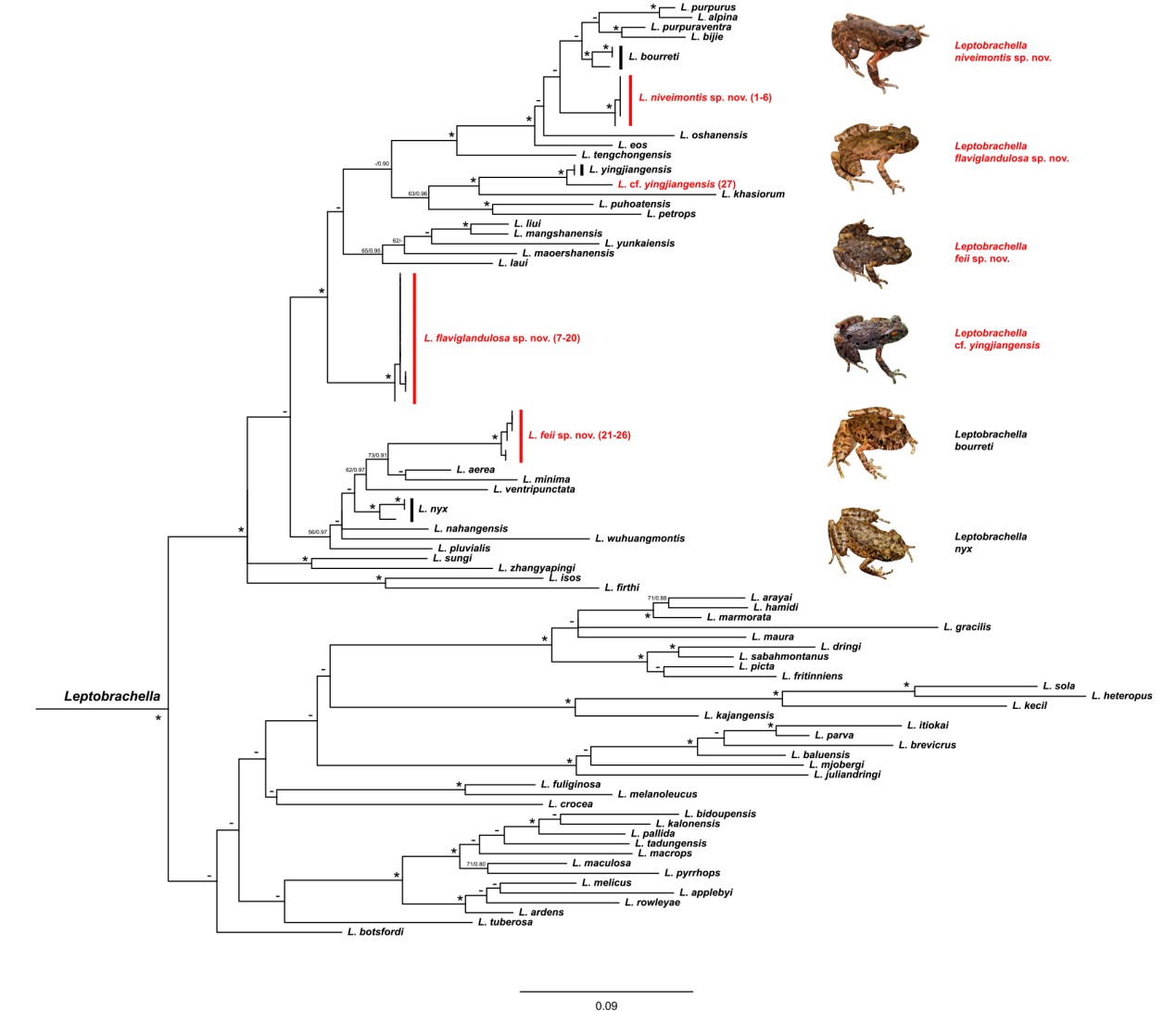Yunnan province is the most Southwest province of China. By neighboring Vietnam, Laos and Burma, it has a 4, 060 km long borderline. Yunnan province is a land of various ethnic groups, landscapes, natural scenery, creatures, etc.. The south area of Yunnan province belongs to the Indo-Burma biodiversity hotspot, which are featured with the extremely rich animal and plant resources.
During the herpetological surveys conducted between 2013 and 2018, from five Nature Reserves along the international border areas in Yunnan Province, China, Prof. CHE Jing’s team from Kunming Institute of Zoology, Chinese Academy of Sciences (KIZ, CAS) discovered three new species and two new record species from China of the genus Leptobrachella (Anura: Megophryidae).
Combing both morphological and phylogenetic analysis, among the 32 specimens collected during the surveys, three of the sampled populations were identified as the new species (deposited at Kunming Natural History Museum of Zoology, KIZ, CAS), i.e., Leptobrachella niveimontis sp. nov., ("Mt. Daxue Leaf Litter Toad" in English and"Xue Shan Zhang Tu Chan"“雪山掌突蟾”in Chinese); Leptobrachella flaviglandulosa sp. nov. (“Yellow-gland Leaf Litter Toad” in English and“Huang Xian Zhang Tu Chan”“黄腺掌突蟾” in Chinese); and Leptobrachella feii (“Fei's Leaf Litter Toad” in English and “Fei Shi Zhang Tu Chan”“费氏掌突蟾”in Chinese). Among them, L. niveimontis is the Leptobrachella species distributes in the highest altitude area from China.
The species of genus Leptobrachella are generally small-sized, forest-floor specialists that inhabit montane evergreen forest throughout tropical and subtropical Asia, ranging from the eastern Himalayas to the islands of Southeast Asia. The discoveries of this study bring the total number of Leptobrachella to 78, and the number of Leptobrachella known from China to 23.
The results suggest that that the diversity of Leptobrachella in China is still underestimated, and future studies include trans-boundary collaborative surveys are recommended. The main findings of the study are published on Zoological Research (doi: 10.24272/j.issn.2095-8137.2020.036).

Figure 1: Bayesian phylogram of Leptobrachella inferred from 16S mtDNA gene fragments (Prof. CHE Jing’s team)
(By LIU Suqing; Editor: HE Linxi)
Contact:
HE Linxi
helinxi@mail.kiz.ac.cn
